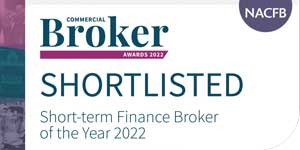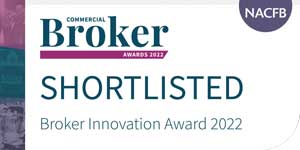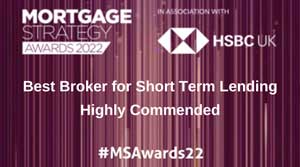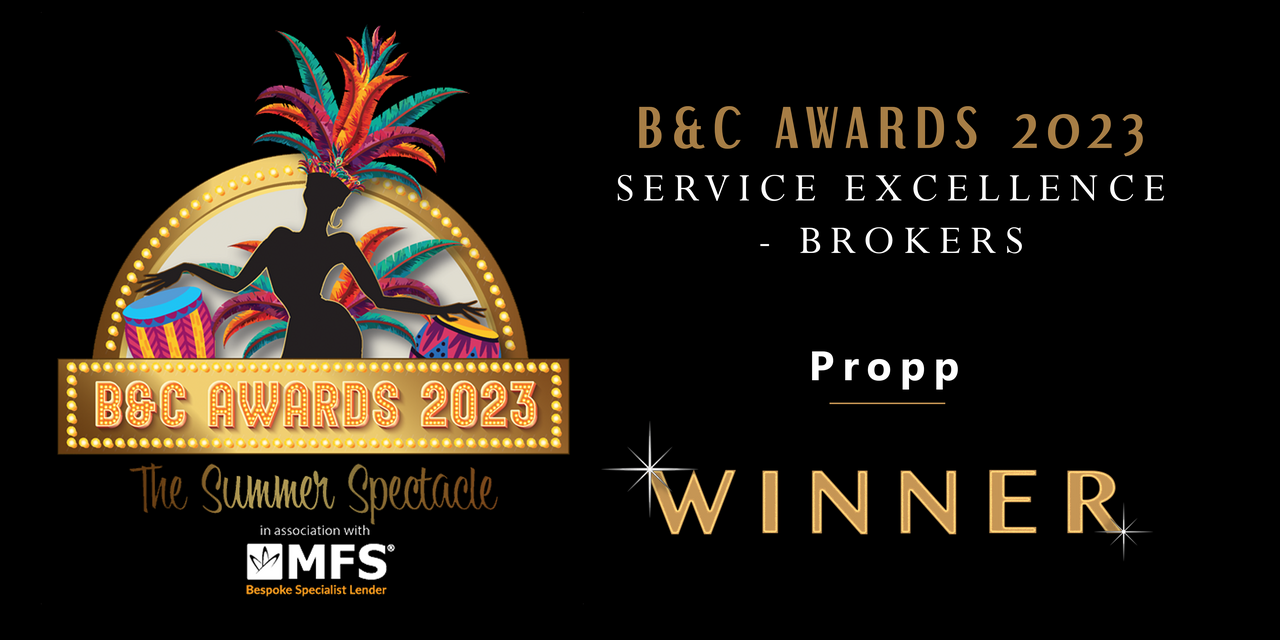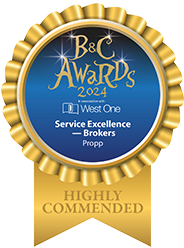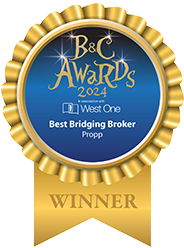What is a bridging loan?
A bridging loan is a form of finance taken if you find yourself in a position where you need to raise finance quickly and flexibly. It’s a short-term loan, a temporary mortgage secured against a property, when the loan is intended to be held for a short period, usually between just a matter of weeks up to 24 months.
Like a traditional mortgage you will need to put down a deposit (or have equity in the property if you are refinancing) however some lenders will accept equity from other property to help reduce the cash deposit needed. Fees will usually be charged by the lender when the loan starts, and interest will apply while you are borrowing the funds.
What is a bridging loan used for?
Our clients usually come to us to source bridging finance when they need access to property finance more quickly than a standard mortgage can provide.
Bridging finance was originally created to bridge the gap between selling your home and buying a new one, however bridging can now help raise finance against a property for a variety of reasons:
- You’re buying a property and the buyer of your existing home has pulled out or the chain has broken
- You’ve found a great deal or a rare opportunity and you need to close quickly
- You’re buying a property at auction and need to pay for it within the 28-day deadline.
- You are buying a property that needs refurbishment but can’t obtain a traditional mortgage because high street lenders and valuers won’t approve an application. For example, there is no working kitchen and bathroom in the residential property.
- You raise funds quickly against a mortgaged property you already own with good equity in it by using a 2nd charge bridging loan. This loan sits behind the first charge mortgage lender.
How does a bridging loan work?
You’ll borrow the money you need to fund your purchase for 6, 12, 18 or 24 months. Due to the flexible nature of a bridging loan, lenders will charge higher interest than they would with a traditional mortgage. Therefore, borrowers will want to consider how quickly they can repay the bridging loan. You may plan to refinance or remortgage the property to clear the loan, or the property may be sold to repay the bridging finance. Alternatively you may have funds being raised elsewhere to settle the finance.
The loan is secured against the new property, so if you fail to repay the lender could repossess the property.
How much can I borrow with a bridging loan?
Our lenders offer loans from £50,000 to £15 million. The amount you're eligible for will depend on the value of the assets you already hold and your income.
You’ll usually only be able to borrow a maximum LTV (loan-to-value) of 75% of the value of the property. However if you have lots of equity in your residential home, or across your property portfolio, you may be able to leverage this by allowing the lender to mitigate their risk by cross-charging, i.e. applying a charge to another property. Some scenarios allow our clients to borrow 100% of the purchase price or property value.
How much does bridging finance cost?
Because it’s a short term loan, a bridging loan interest rate is typically higher than you’d find on a standard residential mortgage. The rate is a monthly one rather than an annual loan and range from 0.39% to 1.5% per month, depending on the lender.
There are usually additional costs to consider, including a product fee and an exit fee if you are able to close the loan facility early. Despite this, it usually works out cheaper to exit the loan earlier as you avoid accumulating more interest.
Lenders will often charge the interest upfront, effectively deducting the expected interest from the loan advance, and if you repay the debt earlier then they will refund that interest back to you. This is commonly called retained interest. Some lenders will allow you to service the interest, so you make monthly interest repayments to the lender, although this is a less common scenario.
How quickly can I arrange a bridging loan?
We have been able to get bridging loans agreed in a matter of hours and funds released within days. More often we would expect an application to be competed in 2-3 weeks however you should be advised how long your situation is likely to take.
In the case of most bridging loan applications speed is a key factor. Lenders and brokers should be geared up to make the approval process as quick as possible, including electronic identification, automated property valuations, and electronic signatures.
Why should I compare Bridging Loans?
If you’ve got this far then there are probably some key reasons why you’re considering bridging finance, with speed and flexibility usually high on the list.
Bridging finance is more costly than a traditional mortgage due to the short-term nature of the loans, but it’s an invaluable tool in an investors box when a deal is bound by time restrictions.
With this in mind it’s important you conduct a bridging loan comparison to make sure you get the best deal possible to prevent you from paying over the odds.
Propp makes it easy for you to perform a fast bridging loan comparison and this will help you compare bridging loan costs, specifically the interest rate, the bridging lender’s product fee as well as comparing the overall cost of bridging loans.
How do I compare Bridging Finance?
With our comparison tool, you’ll need to know just three things:
- How much you want to borrow
- How much the property is worth
- How long you’ll need the bridging loan for
Now just plug those numbers into our bridging loan comparison tool and we’ll show you which lenders offer the best rate for your circumstances.
It’s important to remember though that the bridging loan rate is not the be all and end all. Dependent on your circumstances, you’ll need to factor in fees, exit agreements and lender flexibility. Cheapest is not always best.
How can I save money on my Bridging Loan?
When you use Propp’s Optimiser service you are able to compare bridging loans with rates and fees that have been negotiated based on your specific deal. The property expert that helps optimise the deal will also help you compare bridging lenders based on factors more than just the interest rate. For example, the best bridging loan interest rate that you’re offered may not be right for you, especially if the Propp expert explains that a lender is not currently providing fast turnaround times.
How do I choose which Bridging Lender to choose?
The best product for you will always depend on your individual circumstances and a property finance expert will support you to make this decision, but here are a few examples that explain the strengths of a few of the lenders on our panel.
A borrower may choose a Together Money bridging loan because at that time the lender was flexible around the borrower’s adverse credit which another bridging lender had been unwilling to lend on.
Alternatively, a bridging loan application may be placed with United Trust Bank because the Propp expert explained they would qualify for a fast track bridging option when speed was the biggest factor in the deal.
Masthaven Bank bridging finance might have been offering a very low bridging loan rate as well as a quick decision which the borrower was happy with, weighing up speed and price.
If a borrower was concerned about arranging the exit finance to pay back the bridging loan then they may be interested in the Precise Mortgages ‘Refurbishment Buy to Let’ product. This option provides the landlord with firstly the bridging loan and also the exit refinance of a long term buy to let mortgage once works are completed, offering day 1 reassurance and greater certainty of paying back the bridging loan.
Without having direct experience dealing with bridging lenders the borrower needs to be able trust the experience of the property finance expert helping compare and arrange the bridging loan. At Propp we make the bridging loan comparison simple and transparent and you can rely on having an expert working with you from start to finish.










